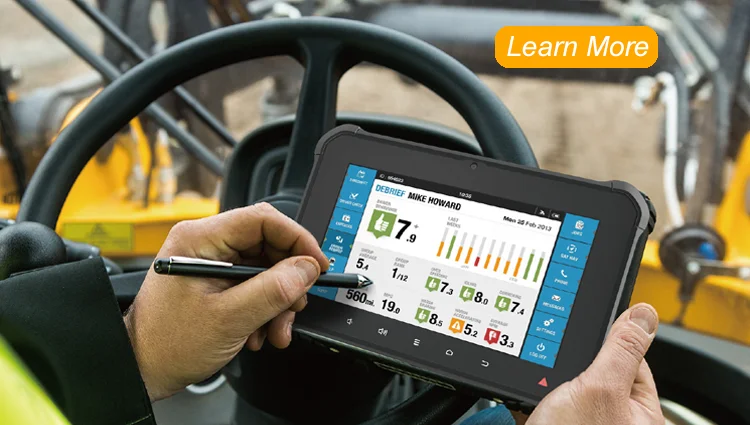In today’s fast-paced healthcare environment, technology plays a crucial role in enhancing patient care and improving operational efficiency. One such innovation making waves in the healthcare industry is the bedside terminal. These devices are revolutionizing the way healthcare professionals deliver care and interact with patients. In this comprehensive guide, we’ll delve into the world of bedside terminals, exploring their functionalities, benefits, and impact on healthcare delivery.
Overview of Bedside Terminals
Bedside terminals are multifunctional devices placed next to patients’ beds in hospitals, providing access to various healthcare services and information. These terminals serve as a centralized hub for communication, patient monitoring, and access to medical records.
Understanding Bedside Terminals
Bedside terminals are advanced technological devices designed to streamline patient care processes and improve communication between healthcare providers and patients. They offer a wide range of features, including access to electronic health records (EHRs), communication tools, entertainment options, and educational resources.
Benefits of Bedside Terminals
Bedside terminals offer numerous benefits for both patients and healthcare providers. Let’s explore some of the key advantages they bring to the healthcare setting.
Enhanced Patient Engagement
With bedside terminals, patients can actively participate in their care by accessing educational resources, communicating with healthcare providers, and reviewing their treatment plans. This increased engagement leads to better health outcomes and patient satisfaction.
Improved Communication
Bedside terminals facilitate seamless communication between patients and healthcare providers, enabling real-time interaction through messaging systems and video conferencing. This enhances collaboration among care teams and ensures timely response to patient needs.
Efficient Workflow Management
By consolidating various healthcare services and information into a single platform, bedside terminals streamline workflow processes for healthcare providers. This improves efficiency, reduces administrative burden, and allows staff to focus more on direct patient care.
Features of Bedside Terminals
Modern bedside terminals come equipped with a wide array of features designed to meet the diverse needs of healthcare facilities and patients. Let’s explore some of the key features commonly found in these devices.
Electronic Health Records (EHR) Access
Bedside terminals allow healthcare providers to access patients’ electronic health records (EHRs) directly from the bedside, enabling them to review medical history, document care interventions, and update treatment plans in real time.
Communication Tools
These terminals are equipped with communication tools such as secure messaging systems and video conferencing capabilities, enabling patients to communicate with their care team and receive timely updates on their condition.
Entertainment Options
To alleviate boredom and enhance patient experience during hospital stays, bedside terminals often feature entertainment options such as movies, games, internet browsing, and access to streaming services.
Impact of Bedside Terminals on Healthcare Delivery
The adoption of bedside terminals has had a transformative impact on healthcare delivery, revolutionizing patient care processes and improving overall outcomes. Let’s examine the significant ways in which these devices have reshaped the healthcare landscape.
Improved Patient Satisfaction
By empowering patients to actively participate in their care and providing access to entertainment options, bedside terminals contribute to higher levels of patient satisfaction and comfort during hospitalization.
Enhanced Care Coordination
Bedside terminals facilitate seamless communication and information sharing among members of the care team, leading to better care coordination, reduced medical errors, and improved patient safety.
Optimized Resource Utilization
With features like electronic health record access and streamlined workflow management, bedside terminals help optimize resource utilization within healthcare facilities, leading to cost savings and improved operational efficiency.
Challenges and Considerations
While bedside terminals offer numerous benefits, their implementation and use also present challenges and considerations for healthcare organizations. It’s essential to address these factors to maximize the effectiveness of these devices and ensure optimal outcomes for patients and providers.
Data Security and Privacy
Protecting patient information and ensuring compliance with data security regulations are critical considerations when deploying bedside terminals. Healthcare organizations must implement robust security measures to safeguard sensitive data and mitigate the risk of breaches.
User Training and Support
Effective use of bedside terminals requires proper training and ongoing support for both healthcare staff and patients. Providing comprehensive training programs and technical assistance ensures users can fully utilize the features and functionalities of these devices.
Integration with Existing Systems
Integration with existing hospital systems and electronic health records (EHR) platforms is essential for seamless workflow integration and data interoperability. Healthcare organizations should carefully evaluate compatibility and interoperability when selecting bedside terminal solutions.
FAQs (Frequently Asked Questions)
How do bedside terminals benefit patients?
Bedside terminals enhance patient engagement, communication with healthcare providers, and access to entertainment options, leading to improved satisfaction and comfort during hospitalization.
What features are typically available on bedside terminals?
Common features include access to electronic health records (EHR), communication tools, entertainment options, educational resources, and patient education materials.
Are bedside terminals secure?
Yes, bedside terminals employ robust security measures to protect patient data and comply with data privacy regulations. These measures include encryption, authentication protocols, and access controls.
How do bedside terminals improve workflow efficiency for healthcare providers?
By consolidating various healthcare services and information into a single platform, bedside terminals streamline workflow processes, reduce administrative burden, and allow staff to focus more on direct patient care.
Can patients access their medical records through bedside terminals?
Yes, bedside terminals enable patients to access their electronic health records (EHR) directly from the bedside, empowering them to review medical history, treatment plans, and test results.
What challenges do healthcare organizations face when implementing bedside terminals?
Challenges include data security and privacy concerns, user training and support requirements, and integration with existing hospital systems and electronic health records (EHR) platforms.
Conclusion:
In conclusion, bedside terminals represent a significant advancement in healthcare technology, offering a myriad of benefits for patients and healthcare providers alike. From enhancing patient engagement and communication to streamlining workflow processes and improving care coordination, these devices play a vital role in modern healthcare delivery. By addressing challenges and leveraging the full potential of bedside terminals, healthcare organizations can optimize patient care and elevate the overall healthcare experience.

